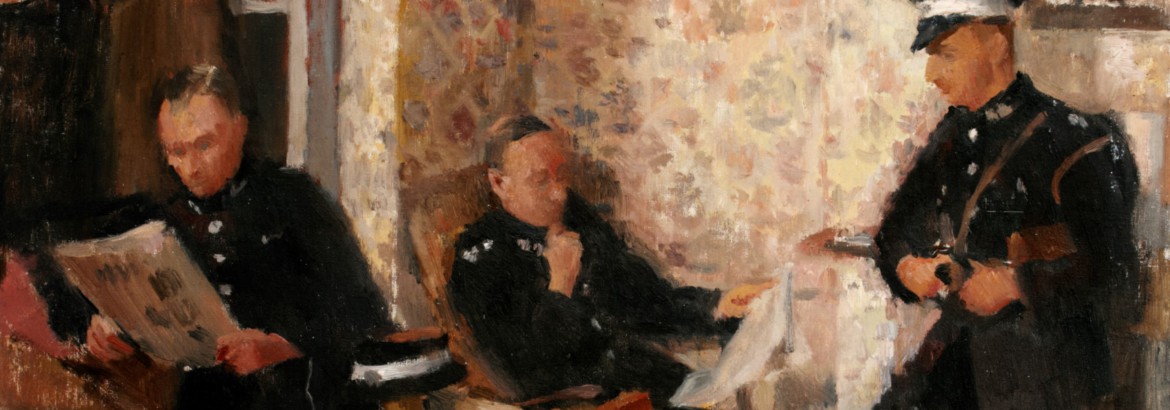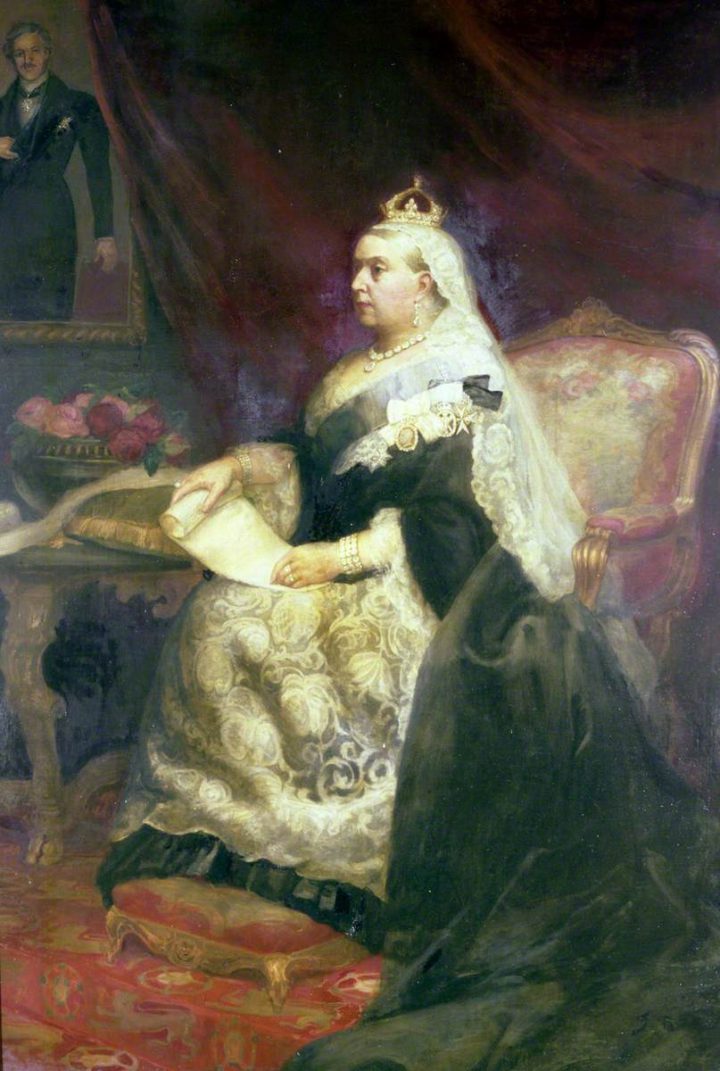Nearly 350 years after Henry VIII dissolved the Order of St John in England, Queen Victoria granted the Order a Royal Charter on St John’s Day in 1888 reviving a close relationship between the Crown and the charity. Following further Royal Charters, the Order is now known as the Most Venerable Order of the Hospital of Saint John in Jerusalem.
Ernest Dudley Heath’s portrait of Victoria shows the Queen holding the charter of incorporation that transformed the Order of St John into a Royal Order of Chivalry, with the eight-pointed cross of the Order visible hanging from her sash. While Queen Victoria is depicted in her characteristic black mourning clothes, her late husband Prince Albert can be seen in the portrait behind her; around his neck is the eight-pointed cross of the Johanitter Order (at this time one of the Alliance Orders of St John).
Queen Victoria granted the Order a Royal Charter ‘in recognition of the excellent work performed by members of the Order of St John during the past half century.’ The Order was celebrated for its services to public first aid, ambulance transportation and health care, including the St John Ambulance Brigade, established in 1887 and the Eye Hospital in Jerusalem in 1882.
Queen Victoria’s recognition of the Order in the late nineteenth century also further encouraged its advancement across the British Empire and today, under the Commonwealth. Over 42 countries in the world including Hong Kong, the Republic of Ireland and New Zealand, have a St John establishment providing care to the community.
The recognition of this Royal Chivalric Order is evident on the Order’s insignia and motifs. Since 1888 the heraldic symbols of the lion of England and the unicorn of Scotland have been affixed to the eight-pointed cross.
Queen Victoria’s legacy is also depicted on the Order’s Service Medals, which are awarded to members of the Brigade for their service and/or distinguished achievements. The Service Medal retains the image of a bust of Queen Victoria; the bust had been taken by a carving made by her daughter Princess Louise, Duchess of Argyll. Many members of Queen Victoria’s family were also inspired by the work of the Order and became qualified first aiders, including Queen Alexandra, Princess of Wales, Princess Victoria, Princess Beatrice, Duchess of Connaught and Princess Louise. Princess Helena, third daughter of Queen Victoria, even translated Professor Friedrich von Esmarch’s First Aid Manuals from German into English.
The ancient Order of St John, now known as the Sovereign Order of Malta, was and in Europe continues to be, a Catholic organisation which acknowledges the Pope as its Head. However, since 1888 the Most Venerable Order of the Hospital of Saint John in Jerusalem recognises the Reigning Monarch as the Sovereign Head, while the Grand Prior of the Order is appointed from the Royal Family. Today the role of Grand Prior is held by the Duke of Gloucester.
The Royal Family have continued to support the charitable work of the Order of St John and its service organisations. Queen Elizabeth, the Queen Mother was appointed Commandment in Chief (Nursing) in 1928 and served in this role until her death in 2002. Princess Anne has been Commandment Chief of the Ambulance and Nursing Cadets since 1970. The Countess of Wessex became the Grand President in 2004, overseeing the St Johns’ Country Presidents who provide support for local St John members. As patron of the organisation, the Queen has also paid tribute to St John volunteers, when on the 900th anniversary of the Order of St John Her Majesty visited the Order’s headquarters at St John’s Gate in 1999.



